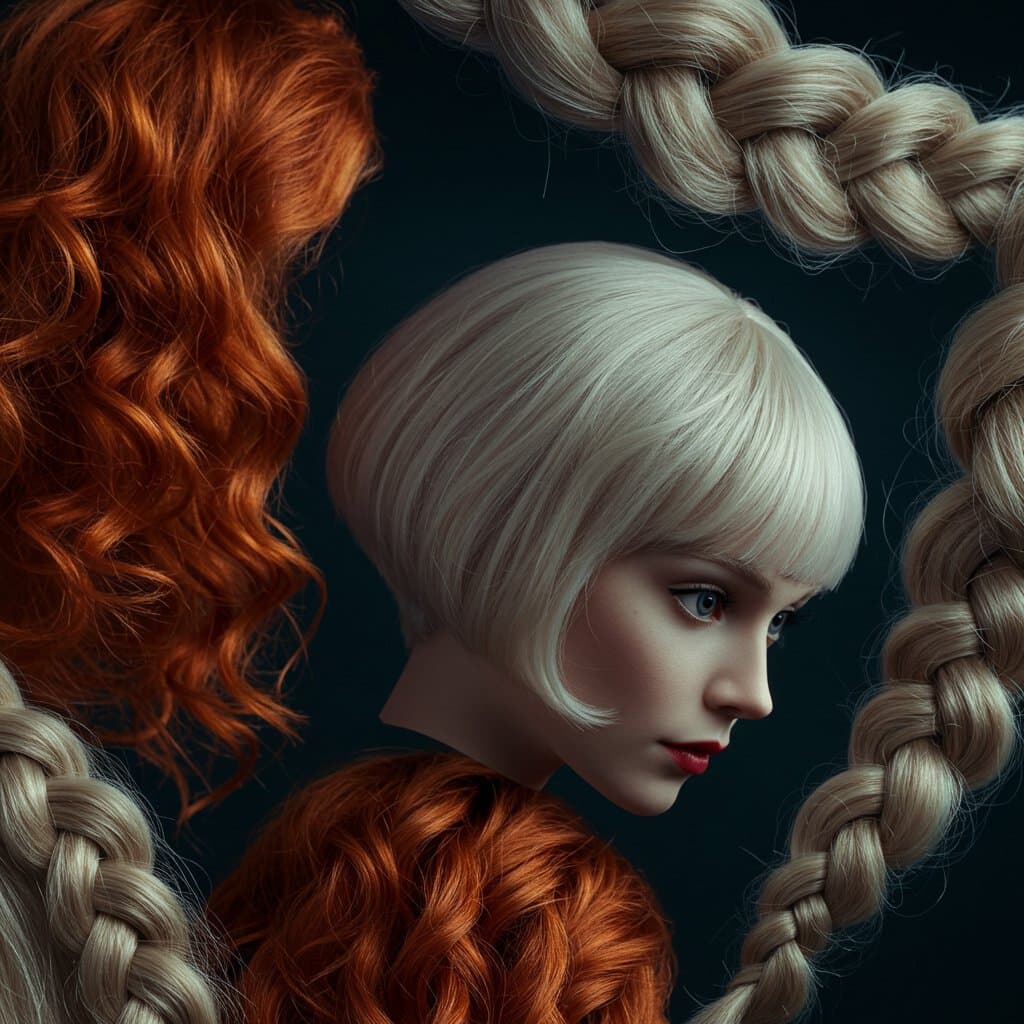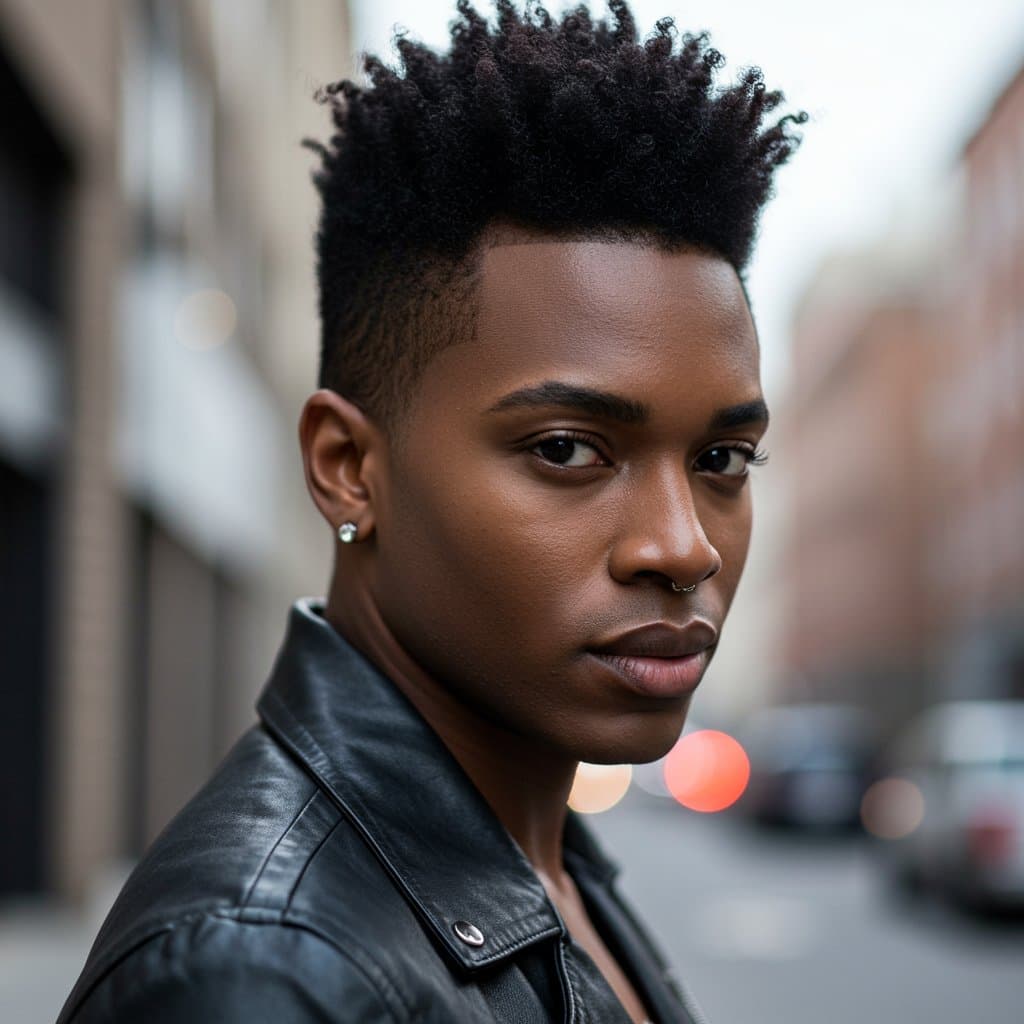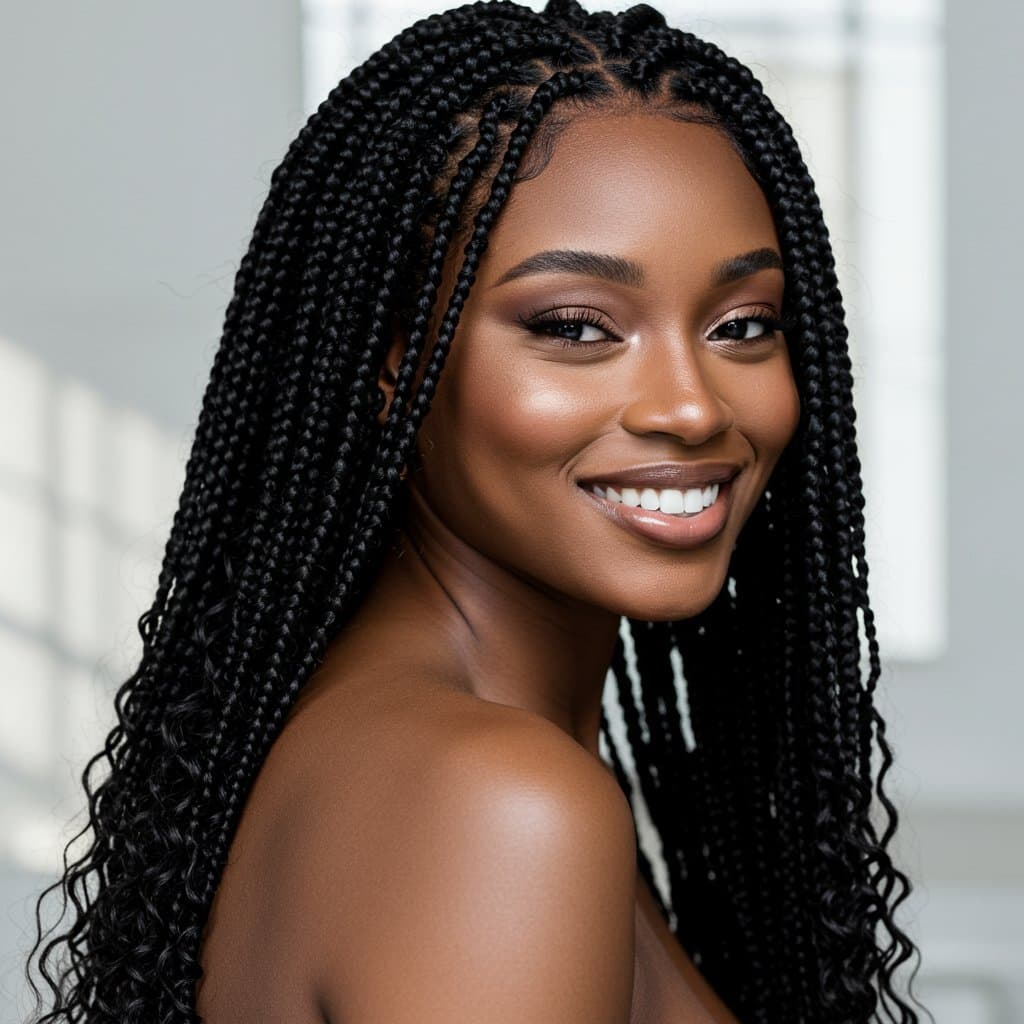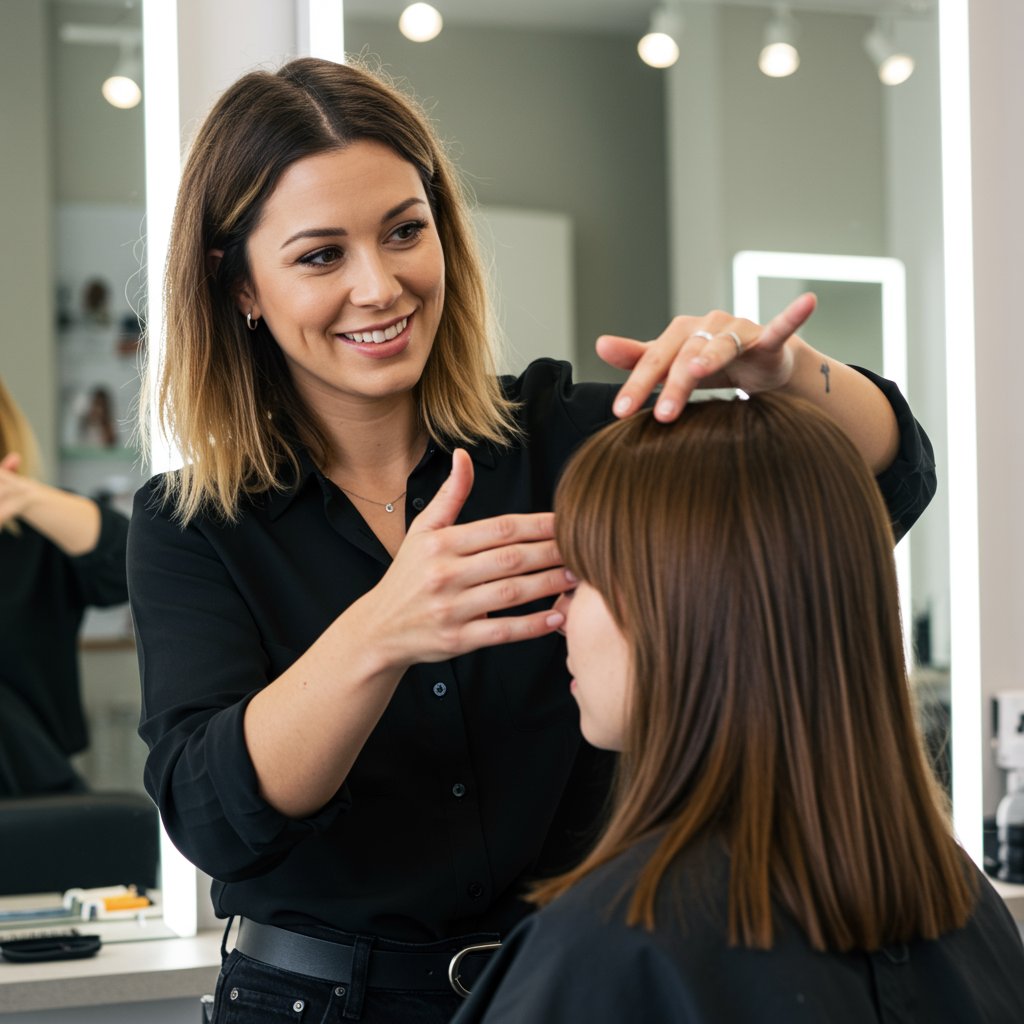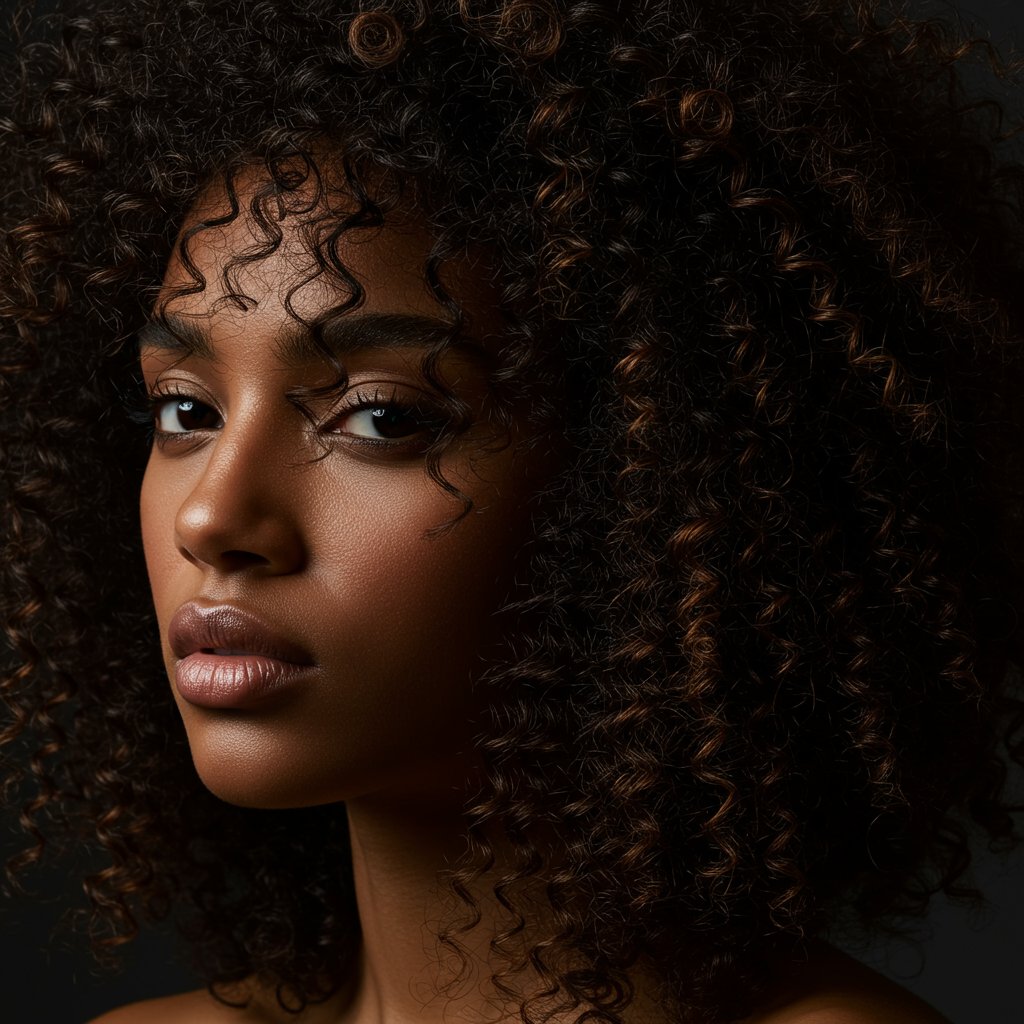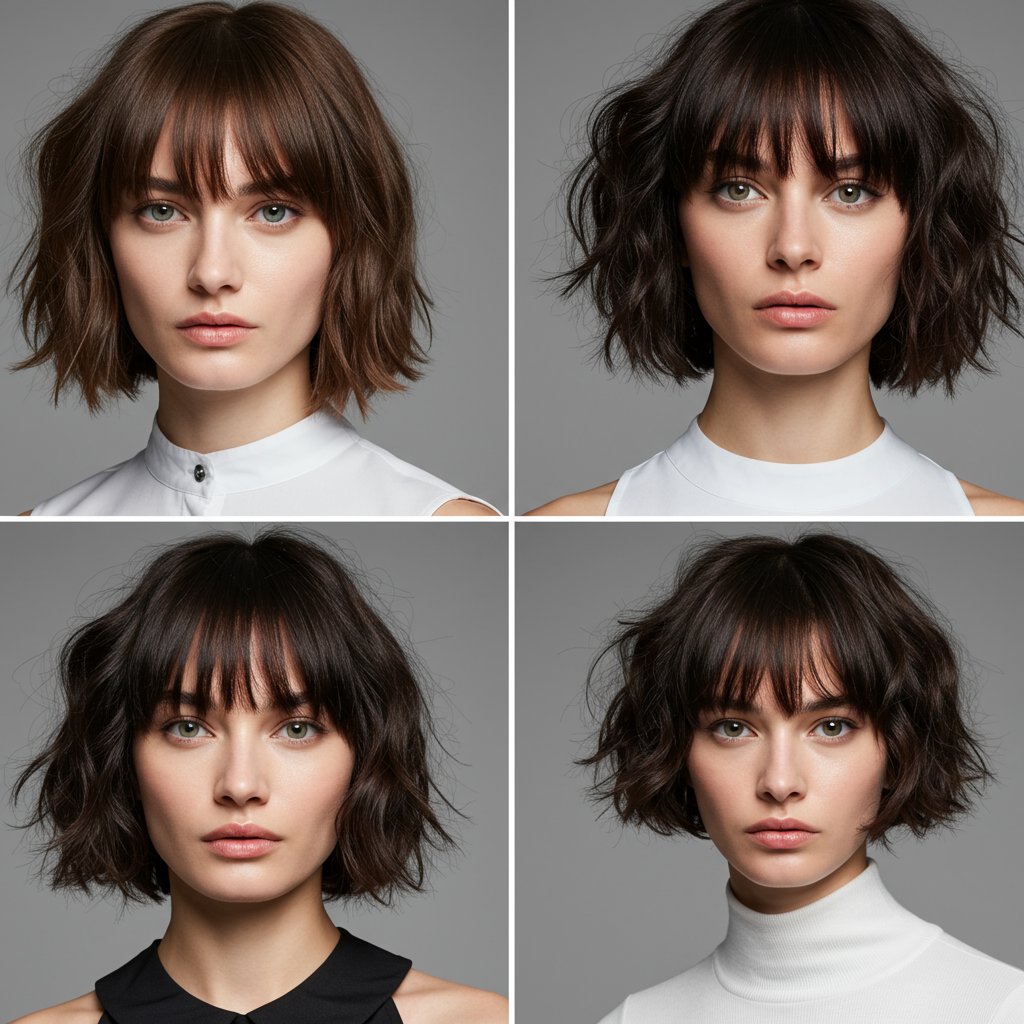Bangs vs. No Bangs: The Great Hair Divide
The question is as timeless as the haircut itself: to get bangs, or not to get bangs? It’s a decision that can dramatically alter your look, frame your face, and even reflect a change in your life. The bangs vs. no bangs debate isn't just about aesthetics; it’s about lifestyle, commitment, and personal expression. One quick scroll through social media reveals countless transformations, with captions ranging from “best decision ever!” to “what have I done?” This guide is designed to navigate that exhilarating, and sometimes terrifying, territory.
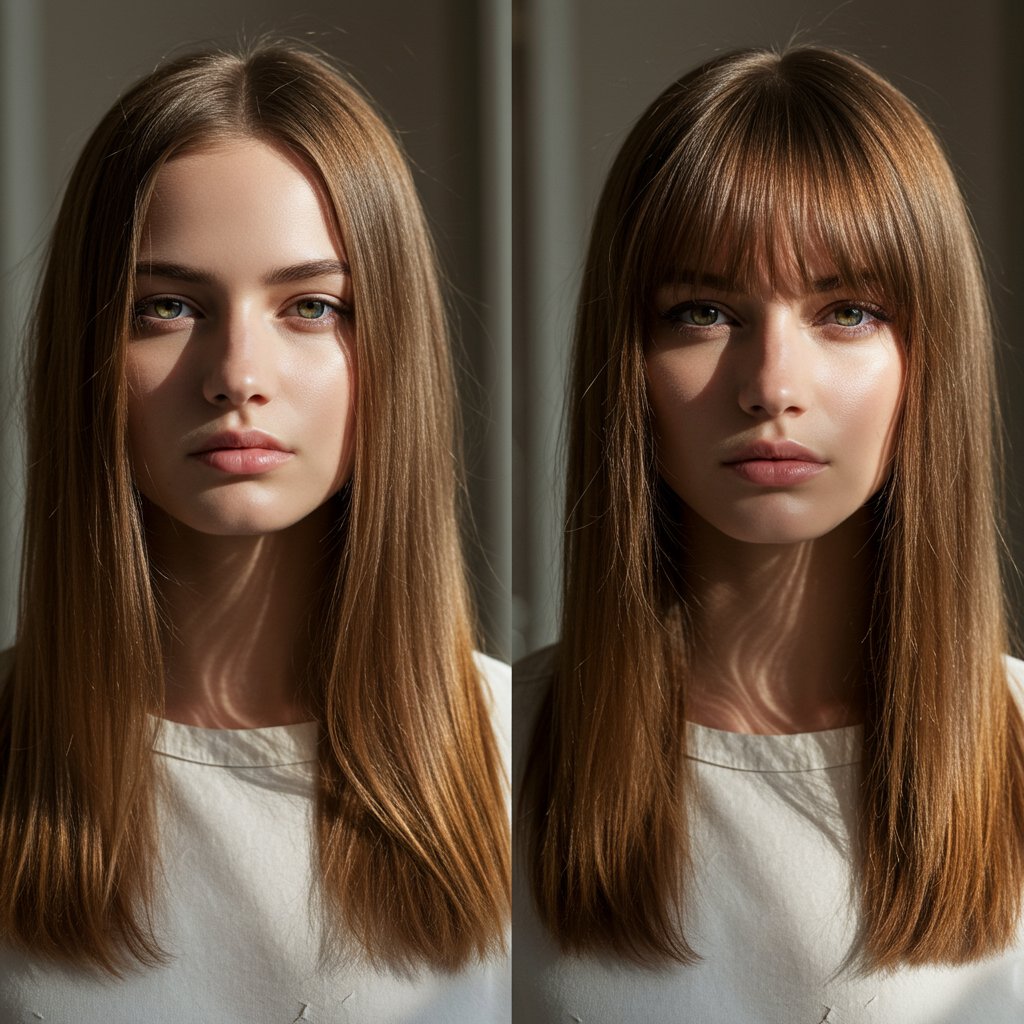
Deciding to cut a fringe is a significant hair commitment, second only to a major color change or a pixie cut. It changes the entire architecture of your hairstyle and how your face is perceived. On the other hand, a hairstyle without bangs offers a classic, open, and often lower-maintenance appeal. So, how do you choose? We will break down every critical factor—from your face shape and hair texture to your daily routine and long-term hair goals—to help you make an informed, confident decision. Whether you're contemplating soft curtain bangs or bold, blunt ones, or reaffirming your love for a fringe-free look, this is your ultimate resource.
---
The Psychology of a Fringe: More Than Just Hair
Bangs, or a fringe, are never just a hairstyle. They are a statement. Psychologically, making a significant change to one's hair is often linked to a new chapter in life—a new job, a breakup, or a renewed sense of self. Bangs are a particularly potent symbol of this transformation because they so drastically alter the face. They can project an aura of confidence, edginess, mystery, or even a soft, romantic innocence, depending on the style. A sharp, blunt bang can feel powerful and artistic, while wispy, feathered bangs can evoke a sense of approachability and ease.
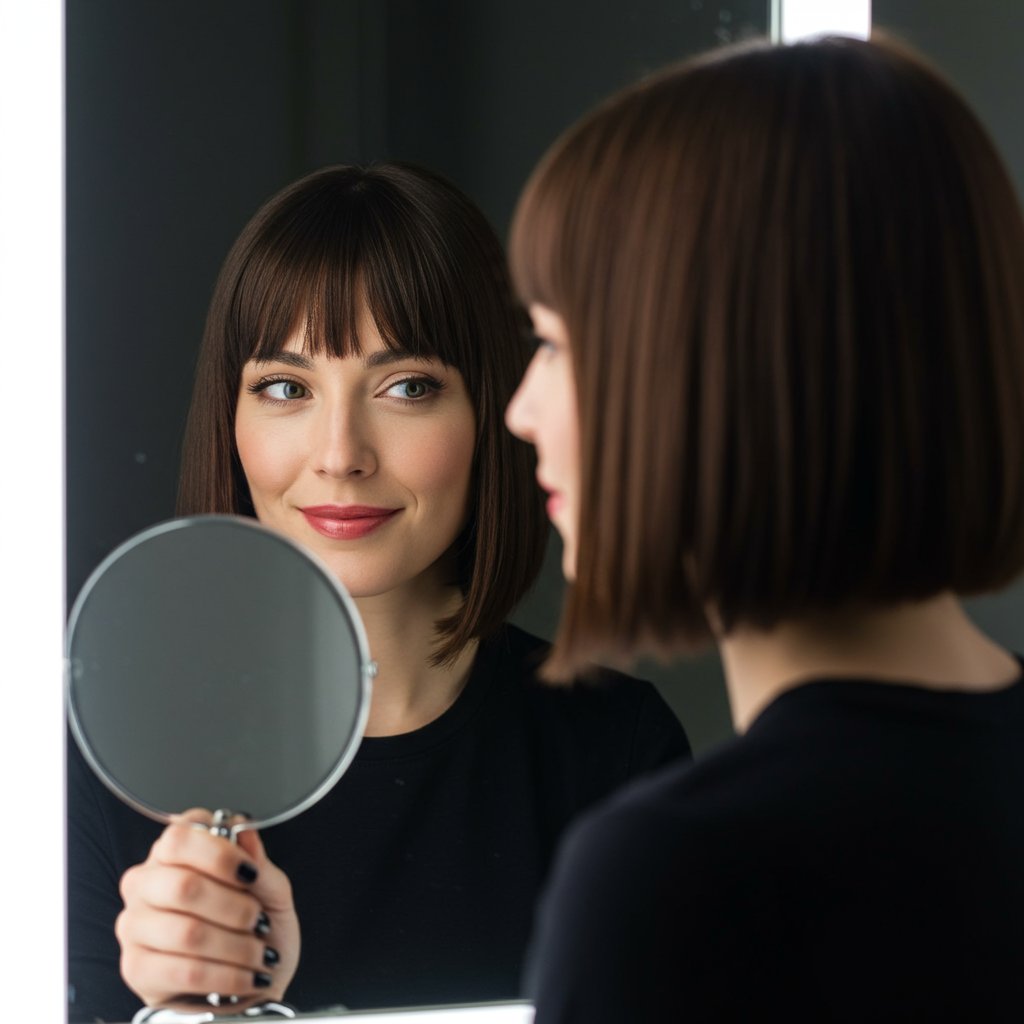
The decision to get bangs can be an act of reclaiming your image. They immediately draw attention to your eyes, making them a focal point. For some, this can be an incredible confidence booster, a way to feel “put together” and intentional with their look. Conversely, the open canvas of a no-bangs style can feel liberating and timeless. It showcases the entire face, projecting openness and simplicity. Understanding the psychological weight and the message you want to send with your hair is a crucial first step in the bangs vs. no bangs debate. It’s about aligning your inner self with your outer presentation.
---
Face Shape Analysis: The Foundation of Your Decision
While personal preference is paramount, the most successful hairstyles work in harmony with your natural features. Your face shape is the most critical factor in determining whether bangs will be flattering. The goal is to create balance and highlight your best features. An experienced stylist can provide a personalized assessment, but here is a general guide to understanding how different bang styles complement various face shapes.
### Oval Face: The Versatile Canvas
Often considered the “ideal” face shape due to its balanced proportions, an oval face can pull off nearly any style of bangs, or no bangs at all. From heavy, blunt bangs to soft, curtain styles and even edgy micro-bangs, the options are virtually limitless. The choice here is less about correction and more about personal style expression. If you have an oval face, the bangs vs. no bangs question is truly yours to answer based on preference.
### Round Face: Creating Angles and Length
For round faces, the goal is to add length and create the illusion of sharper angles. Softly angled, side-swept bangs or a deep side part with a long fringe can be incredibly flattering. These styles break up the roundness of the face. A more modern option is long, airy curtain bangs that open up the center of the face and draw the eye downwards. Heavy, straight-across blunt bangs should generally be avoided, as they can accentuate roundness by creating a horizontal line that shortens the face.
### Square Face: Softening Strong Features
Square faces are characterized by a strong, defined jawline and a broad forehead. The right bangs can beautifully soften these angles. Long, wispy, or feathered bangs that hit around the brow or cheekbone are ideal. A-shaped curtain bangs that are shorter in the middle and longer on the sides also work well to frame the face and soften the corners. A heavy, blunt bang can sometimes over-emphasize the squareness, but a slightly rounded or textured version can work.
### Heart-Shaped Face: Balancing a Wider Forehead
Heart-shaped faces are wider at the forehead and taper to a narrower chin. Bangs are a fantastic tool for creating balance. Wispy, side-swept bangs are a classic choice, as they draw attention diagonally across the face and away from the width of the forehead. Lighter, textured curtain bangs also work beautifully to soften the upper portion of the face. The key is to avoid anything too heavy or blunt, which can make the top of the face appear even wider in contrast to the delicate chin.
### Long/Oblong Face: Adding Width
For those with a long or oblong face shape, bangs are a powerful tool for creating the illusion of width and breaking up the vertical length. Straight-across, blunt bangs that hit right at or just below the eyebrow are the most effective style. This strong horizontal line visually shortens the face. Fuller, heavier bangs work better than thin, wispy styles. A no-bangs look, especially with a center part and long, straight hair, can sometimes elongate the face further, making a fringe a transformative choice.
---
Hair Type and Texture: The Reality Check
Your dream bangs might look perfect on a celebrity, but their success on you depends heavily on your natural hair type and texture. This is where fantasy meets reality. Ignoring your hair's natural tendencies is the fastest route to daily frustration and what many call “bangs regret.” Before making the cut, have an honest conversation with your stylist about what your hair can and will do.
### Fine Hair
Fine hair can be tricky with bangs because you don't want to sacrifice too much volume from the rest of your hair. A stylist might need to take the section for the bangs from further back on the head to create a look of fullness. Wispy, piecey bangs often work better than heavy, blunt styles, which can look sparse. A major benefit for fine hair is that bangs can make the rest of your hair appear thicker and fuller by creating a focal point.
### Thick Hair
Those with thick hair have a great canvas for almost any bang style, especially bold, blunt ones. However, thick hair can also lead to puffy, bulky bangs if not cut correctly. A stylist will need to use texturizing techniques to remove weight and ensure the bangs lay flat and move naturally. Curtain bangs on thick hair are particularly beautiful but require proper styling to avoid looking too heavy around the face.
### Curly and Wavy Hair
Curly bangs are incredibly stylish but require a specialized cutting technique and a commitment to styling. They should always be cut dry, curl by curl, to account for shrinkage and the individual curl pattern. A “deva cut” specialist is often recommended. Curly bangs will behave differently every day and require moisture-rich products to prevent frizz. For wavy hair, longer curtain bangs or shaggy bangs are a great way to embrace natural texture without fighting it every morning.
### Straight Hair
Straight hair is the easiest canvas for most bang styles, as it lays flat naturally. Blunt, micro, and side-swept bangs are all relatively low-maintenance. However, straight hair can also make cowlicks more prominent and can get oily faster, which is more noticeable on a fringe that lays directly on the forehead. Regular washing or a good dry shampoo will be your best friend.
---
The Lifestyle Factor: Commitment and Maintenance
The bangs vs. no bangs decision often comes down to one simple question: How much time are you willing to spend on your hair each day? Bangs are a commitment. They are the first part of your hair to get oily, the first to get frizzy in humidity, and they require regular maintenance to look their best. A no-bangs style, by contrast, is the epitome of “get up and go” hair, offering simplicity and versatility.
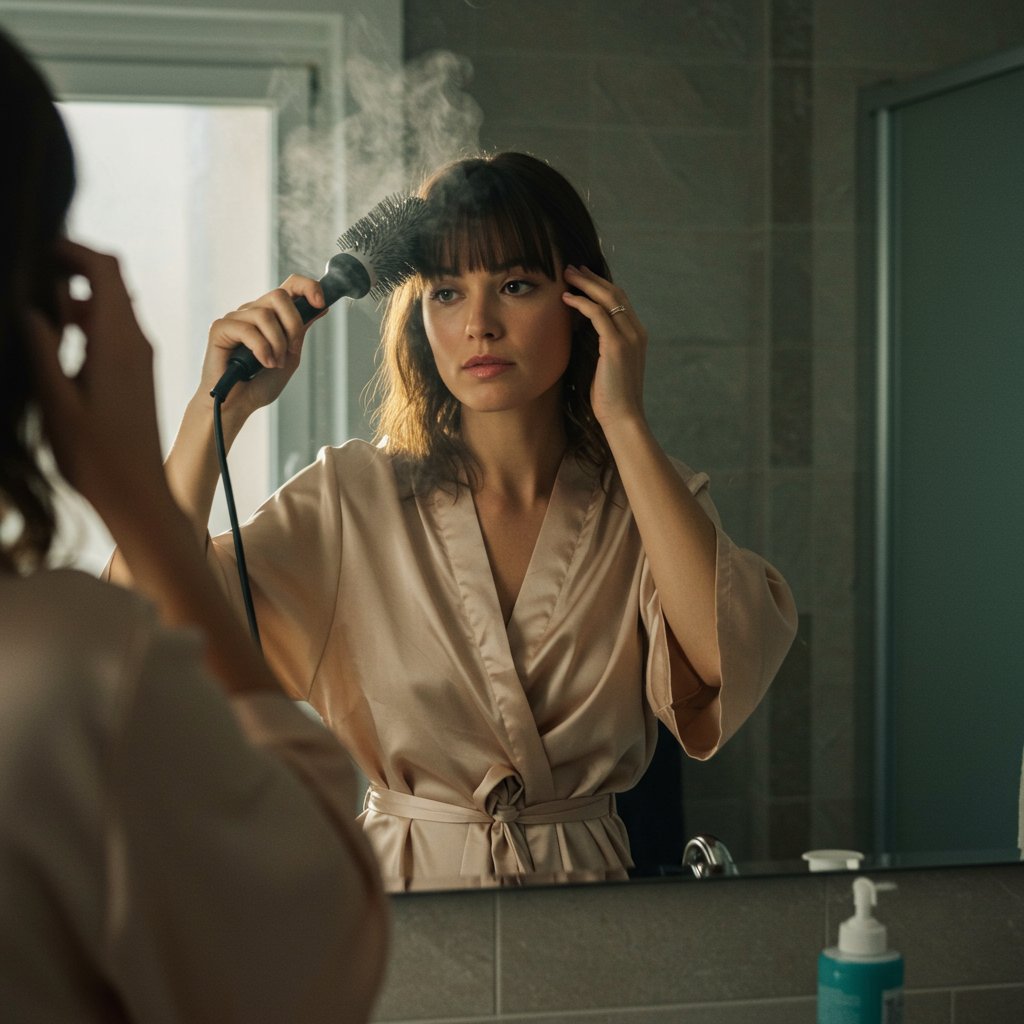
Consider your daily routine. Do you have 10-15 extra minutes in the morning to blow-dry, flat iron, or style your bangs? Are you prepared to carry a small bottle of dry shampoo for midday touch-ups? Bangs often require trims every 4-6 weeks to maintain their shape, which is an added time and cost consideration. If you are an active person who exercises frequently, bangs can be a nuisance, sticking to a sweaty forehead. Weighing these practical, daily realities against the aesthetic you desire is key to making a choice you’ll be happy with long-term. If low-maintenance is your mantra, a life without bangs might be the more peaceful path.
---
Trend vs. Timeless: Exploring Popular Bang Styles
While the core debate is binary, the world of bangs is rich with variety. Understanding the different styles can help you find a version that fits your personality and trend appetite. On the other side, classic no-bangs looks offer a timeless elegance that never goes out of style.
### On-Trend Bangs
- Curtain Bangs: The reigning champion of modern bangs. Popularized in the '70s and brought back with a vengeance, these longer, center-parted bangs frame the face beautifully and are relatively low-maintenance as they grow out.
- Blunt Bangs: A bold, powerful statement. Cut straight across, these bangs are chic, and dramatic, and require precision and confidence.
- Wispy Bangs: A soft, delicate, and often see-through fringe. They're a great entry point for those nervous about a heavy bang, offering a subtle change.
- Shag / Wolf Cut Bangs: Integrated seamlessly into a layered, textured haircut, these bangs are choppy, effortless, and full of rock-and-roll attitude.
- Micro Bangs: Edgy, fashion-forward, and daring. These super-short bangs sit well above the eyebrows and require a strong sense of personal style to pull off.
### Timeless No-Bangs Styles
- The Classic Center Part: Simple, elegant, and symmetrical, it opens up the face and works well with long, layered looks or a sharp bob.
- The Deep Side Part: Creates instant volume and a touch of old-Hollywood glamour. It's a versatile way to change your look without a cut.
- Slicked-Back: A powerful, high-fashion look that showcases bone structure and exudes confidence.
- Long Layers: Face-framing layers can give the illusion of a fringe without the commitment, providing softness and movement around the face.
---
The Grow-Out Phase: Planning Your Exit Strategy
One of the biggest fears holding people back from getting bangs is the dreaded grow-out phase. It can be an awkward journey from fringe to face-framing layer. However, with a solid plan, it doesn't have to be a style nightmare. The key is strategic styling and accessories. As they grow, they will transition through several stages: first, they can be styled as side-swept bangs. Then, as they get longer, they evolve into curtain bangs.

Accessories are your best friend during this period. Chic headbands, stylish barrettes, and elegant hair clips can artfully hold back the awkward-length pieces. Braiding the front sections of your hair is another beautiful way to incorporate the growing fringe. It's also a good idea to visit a stylist for a “shaping” trim during this phase. They can add texture and blend the growing bangs into the rest of your layers, making the transition seamless rather than stark. Knowing you have a graceful exit strategy can make taking the initial plunge far less intimidating.
---
Professional Consultation: Why a Stylist's Opinion Matters
While this guide provides a comprehensive overview, nothing can replace a one-on-one consultation with an experienced hair stylist. A professional can assess the unique factors that a blog post cannot: the exact texture and density of your hair, the subtle nuances of your face shape, the location of any cowlicks, and your hair's growth patterns. They can hold sections of your hair up to your face to give you a realistic preview of how bangs would look.
An honest conversation with a stylist is crucial. They can manage your expectations and suggest the most flattering and manageable style for you. They might propose a version of bangs you hadn't considered or explain why a no-bangs look with specific face-framing layers would achieve your goals more effectively. Investing in a professional consultation is the best way to ensure that your final decision in the great bangs vs. no bangs debate is one you love and can live with happily.
---
Pro Tips for Perfect Hair: With or Without Bangs
Whether you decide to take the plunge or stick with a classic look, here are some quick tips for keeping your hair at its best.
### For Team Bangs
- Invest in Dry Shampoo: It's a non-negotiable for absorbing oil and refreshing your fringe between washes.
- Get a Mini Flat Iron: The small plates allow for precise styling and taming of unruly pieces.
- Master the Round Brush Blow-Dry: Use a small round brush and dry your bangs from the roots downwards as soon as you get out of the shower to control their direction.
- Schedule Regular Trims: Don't wait until you can't see. Book trims every 4-6 weeks to keep them looking sharp.
### For Team No Bangs
- Focus on Face-Framing: Ask your stylist for soft, long layers that frame the face to add interest and movement without the commitment of a fringe.
- Play with Your Part: Switching from a center part to a deep side part can dramatically change your look with zero commitment.
- Embrace Accessories: Headbands, scarves, and statement clips can add a point of interest near your face, similar to the effect of bangs.
- Prioritize Hair Health: Without bangs to hide behind, the condition of your hairline and the overall health of your hair is on full display. Invest in good treatments and serums.
---
Frequently Asked Questions (FAQ)
1. How often do bangs need to be trimmed?
To maintain their ideal length and shape, bangs typically need to be trimmed every 4 to 6 weeks. Many salons offer complimentary or low-cost fringe trims between regular haircut appointments.
2. Can I cut my own bangs?
While it's tempting, it's generally not recommended. Cutting bangs requires precision, an understanding of hair tension, and specific techniques. A small mistake is very visible. It's always best to have them cut by a professional stylist.
3. What products are essential for maintaining bangs?
A quality dry shampoo is number one for combating oiliness. A light-hold hairspray can help keep them in place without looking stiff, and a heat protectant spray is crucial if you use a flat iron or blow dryer daily.
4. Do bangs make you look younger?
They often can! Bangs can soften the face and conceal forehead lines, which can create a more youthful appearance. However, a harsh, unflattering style can have the opposite effect, so choosing the right type for your face shape is key.
5. Are bangs suitable for professional environments?
Absolutely. Classic styles like soft side-swept bangs or neat, brow-skimming blunt bangs are perfectly professional. The key is keeping them well-groomed and tidy. An unruly, overgrown fringe might look less polished.
6. How do I deal with "bangs regret"?
If you're not happy with your new fringe, don't panic. First, try styling them differently—a side part can change the whole look. If that doesn't work, embrace the grow-out phase with stylish clips, headbands, and braids. A good stylist can also help blend them into your hair as they grow.
---
The Final Verdict: Your Hair, Your Choice
In the end, the bangs vs. no bangs debate has no single winner. The right choice is deeply personal and depends on a unique combination of your facial features, hair type, lifestyle, and personality. Bangs can be a transformative, confidence-boosting style statement, but they demand care and commitment. A no-bangs look offers timeless versatility and ease, allowing your facial features to take center stage.
Use this guide as your roadmap, weigh the pros and cons honestly, and look for inspiration that features people with similar hair textures and face shapes to your own. The most important step you can take is to book a consultation with a trusted stylist. They will be your expert partner in this decision, helping you choose a look that not only looks fantastic but also feels authentically you. Whether you walk out of the salon with a fresh new fringe or a renewed appreciation for your classic cut, the best hairstyle is always the one that makes you feel like the best version of yourself.



